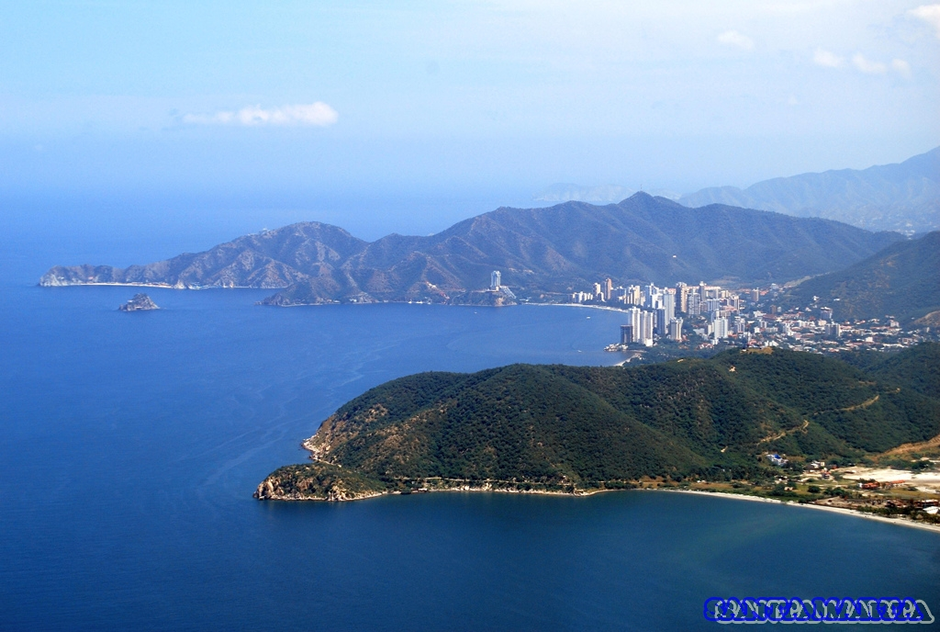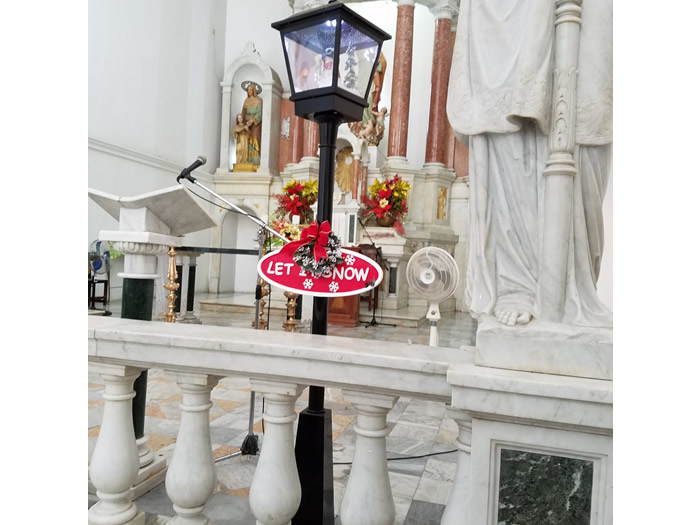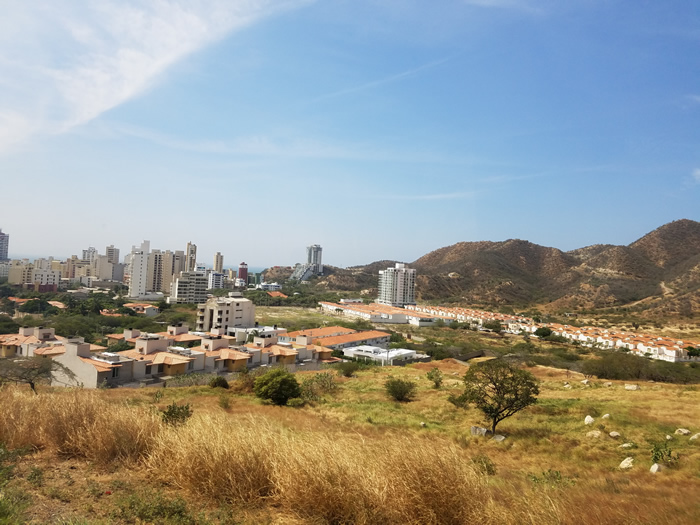Santa Marta Columbia (January 7, 2016)

Ok, so I stole the picture below! What Santa Marta is suppose to look like - not what we saw on a cloudy day, from the city.


We did see this. As you might imagine, Bolivar is very famous here.
My first glimpse of Columbia is of steep, barren tall island, as in hills. I suppose you can call them mountains. Part of the Sierra Nevadas. There are what look like sticks on these hillls which are actually saguaro cacti! At the dock is parked a ship with Dole emblazoned on the side and containers with Dole on the side are being loaded. Could be coffee pineapples, or bananas. Surprise, coal is another export of Columbia!
Everyone is somewhat upset over the shooting at the Fort Lauderdale airport yesterday most of the passengers came through there on Wed and realize how fortunate we were that the gunner traveled on Friday, not Wed, but it is quite unsettling.
It is HOT! I realize that I cannot expect too much sympathy. Even so temperatures in the mid to high 80s are below average. Humidity of 79% adds to the picture. We are not landing where the Captain wanted but have been shuffled to a cargo area, on which we are not permitted to walk. The harbor master rules!
A bit of history skip if you are bored: Santa Marta is the capital of the department of Magdalena and third largest urban city of the Caribbean Region of Colombia, after Barranquilla and Cartagena. Founded on July 29, 1525, by the Spanish conquistador Rodrigo de Bastidas,(To whom there is the obligatory statue at the entrance to the port.) it was the first Spanish settlement in Colombia, and is the oldest surviving city in that country, and supposedly the second oldest in South America according to them. This city is situated on a bay of the same name and as such, is a prime tourist destination. (Statement courtesy Chamber of Commerce, with no way to compare.)
Experiences:
Of course we had to do the usual tourista stuff, like visit the oldest cathedral in the Americas. An amusing piece was found near the altar bringing a chuckle to us Yankees. There stood what looked like an old American lamppost. Inside the globe on top is a snowman and snow. A sign hung below it said (in English), "Let it snow" (See picture) The museum had exhibits of some of the gold pieces created by the Tayono people that had somehow escaped being melted down by the Spanish and shipped to Spain. They were great gold artisans.
Santa Marta has a water problem. Ordinarily it rains a lot in this season, but the last few years have been a drought. The Tayona National Park is closed now so that the natives can perform some services, that are supposed to bring rain! Religion here seems to be a mix of African beliefs and Christianity. The influence of the slaves brought here by the British.
Besides supposedly being the rainy season, it is the windy season, and I cannot argue with that. The wind started yesterday morning, built up all day and made walking shipboard an interesting experience, but did not interfere with sleep, it was gentle movement.
Medellin, a city that we associate as the capital of the drug trade, is interestingly the most modern of all Columbian cities. They have city water and sewer, great public transportation and city services. Looks like the drug lords did for the citizens what the government could not, or would not do. Probably a secret to their power.
Boilvar, the national hero and liberator spent his last days here, and was first buried in the cathedral, but ultimately his remains were moved to Caracas. When he liberated South America, he had hopes that these "countries" would form one united country, but unfortunately, they were not blessed with the likes of Thomas Jefferson, James Madison, John Adams, Ben Franklin etc. like we were after we threw off the British. Instead there were small men who wanted power and cared little for the people establishing their own fiefdoms much like the Spanish provinces. It was one of the sadness's of Bolivar's short life (he died at 47).

We drove up a narrow road along with buses for every other tourist in town for a "panoramic view" of the city. It was look quick because there were no look-outs, although where they could put one escapes me. It was panoramic, but soon over. Fortunately, I was on the good side of the bus!
I thoroughly enjoyed the botanical garden. Oh, that we had been here two weeks ago before the large ficus tree died. It's remains were lying on both sides of the walkway and it was obvious that it was freshly cut. On both sides of the walkway are the remains, both of which are the size of a medium size cabin. The city is in morning for the tree. There were other huge ficus trees which I did enjoy marveling at. They are very stately. And, iguanas! Evn in the trees. Apparently, the people use to eat them, (we were told that they tasted like chicken.) and they were on the verge of extinction when the government stopped the practice and made them an endangered species.
We were also informed that Santa Marta is a city of "no hurry." When business men from Bogata visit they are upset because the Santa Martans are very loose with time and get to a meeting when they are ready, as in not punctual. Also, unlike the other Columbian cities, office hours are 8 to 12 and 2 to 6. Ah, siestas.
The city has a problem with refugees! They fled the violence in their home provinces and the government has provided housing for them, but the few we saw looked bewildered and lost. With the war against the PARC it is hoped over, the government is trying to resettle them in their original areas. However, the young have now made a life for themselves here and are reluctant to leave. Very hard on families, which are very strong in all Latin America countries.

What we did see from the ship!